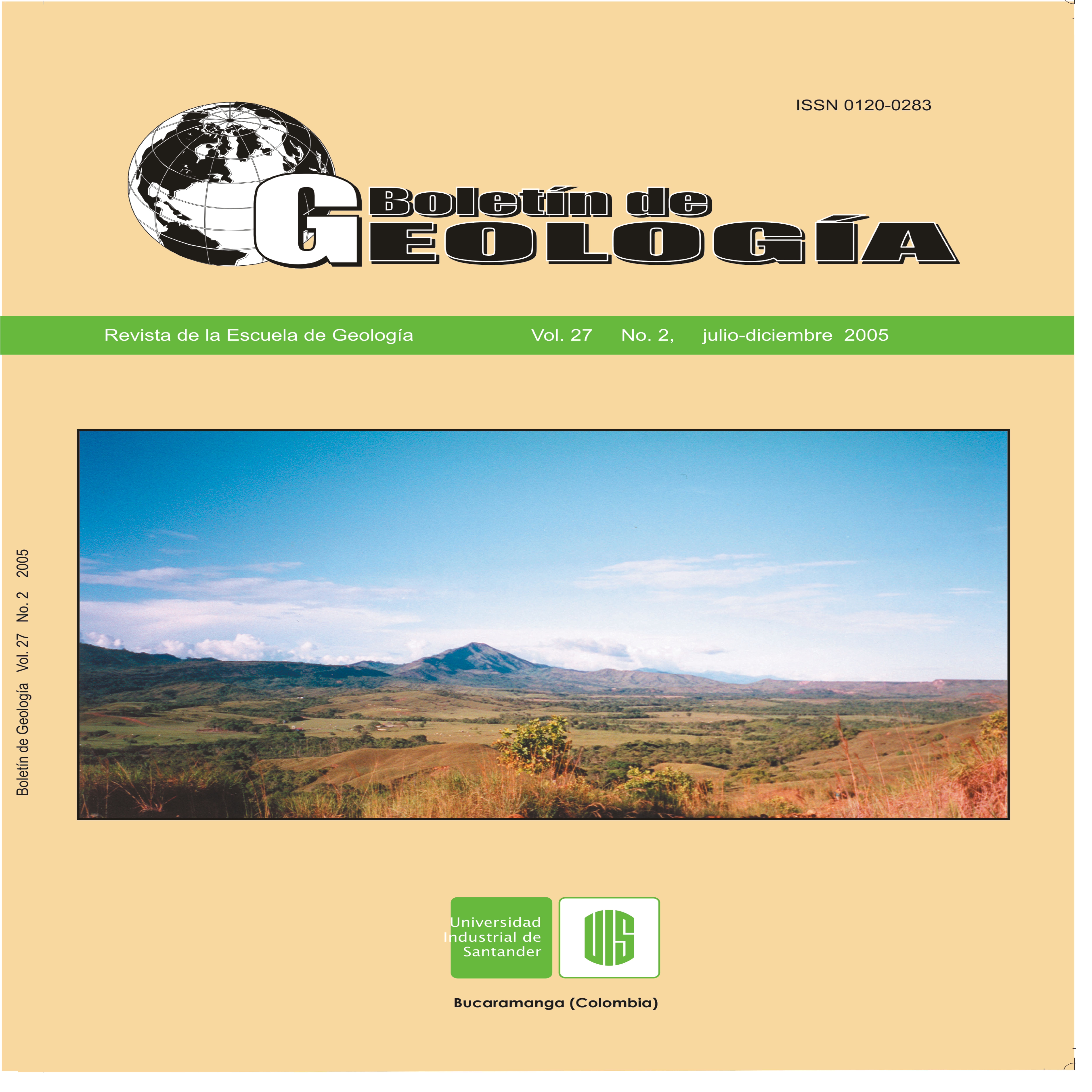BIOLOGICAL NEW PRODUCTIVITY IN THE EASTERN EQUATORIAL PACIFIC: RESPONSES TO NUTRIENTS INPUT FROM COLOMBIAN PACIFIC RIVERS, COASTAL UPWELLING AND ATMOSPHERIC DUST.
How to Cite
Abstract
Understanding the carbon cycle and the climate system requires a deep knowledge of the nutrient balance and the mechanisms that control biological productivity in the Eastern Equatorial Pacific (EEP). We used two box models to explore the balance of nutrients and its biological productivity in terms of new production (NP) in a region in front of the mouth of the Rio San Juan (2.5ºN - 5.5ºN and 77.5ºW - 86.5ºW). A NP of ~215 mg C m-2day-1 results from a model where the fluvial contribution is neglected; whereas a NP of ~227 mg C m-2day-1, - equivalent to primary productivity (PP) of ~1.51 g C m-2day-1-, results from a model that includes fluvial contribution of nutrients. In our models it is evident that the flow of Fe and NO3 must change seasonally and with the rainfall regime that affects fluvial discharge. Iron supply controls NP independently of NO3 availability in the water column. In contrast to the south Equatorial Front, PP offshore the San Juan river increases due to the continental supply of nutrients.
Keywords: Panama Basin, biological productivity, geochemical modelling, eastern equatorial Pacific (EEP).
Downloads
References
Cabri, L. (1987). The mineralogy of precious metals:new developments and metallurgical implications. TheCanadian Mineralogist, Vol. 25, pp. 1-7
Chen, T. T., Cabri, L. J., and Dutrizac, J. (2002).Characterizing gold in refractory sulfide gold ores andresidues. JOM, Vol. 54, No 12, pp. 20-25
Gallego, A., y Zapata, D. (2003). Caracterizaciónmineralógica como soporte para la implementación ymejoramiento del proceso de extracción de oro. Mina deoro El Zancudo, Titiribí, Antioquia. Tesis de grado.Ingeniería Geológica. Universidad Nacional de Colombia.Medellín, 152p.
Gasparrini, C. (1993). Gold and other precious metals:from ore to market. Springer-Verlag, Hong Kong, 400p.Gaviria, A. (1998). Estudio de menas auríferas deloccidente colombiano: influencia de las característicasmineralógicas en el proceso extractivo. Medellín. Trabajode investigación (Ingeniero Químico). UniversidadNacional de Colombia. Facultad de Minas, 140p
González, H. (2000). Mapa geológico del departamentode Antioquia: geología, recursos minerales y amenazaspotenciales, Escala 1:400000. INGEOMINAS. Medellín
Grosee, E. (1926). Estudio geológico del TerciarioCarbonífero de Antioquia en la parte occidental de lacordillera Central de Colombia entre el río Arma y Sacaojal.(Ernest Vohsen Ed) Berlín: Dietrich, 374p
Marsden, J., and House, I. (1992). The chemistry ofgold extraction. Vol. 2, (Ellis Horwood, Ed), UnitedKingdom, 420p
Multi Mix Systems Pty Ltd. (1992). Treatment of OresContaining Reactive Iron Sulphides. Technical Bulletin1. Australia, 7p
Pérez, J., Ramírez J. (1998). Biolixiviación de un mineralrefractario procedente de la mina el zancudo (Titiribí,Antioquia). Tesis de grado. Universidad Nacional deColombia. Medellín, 112p
Ingeominas. (1987). Publicaciones Geológicas Especialesdel Ingeominas : Recursos Minerales de Colombia /Ingeominas, No 1. Tomo 2. Bogotá
